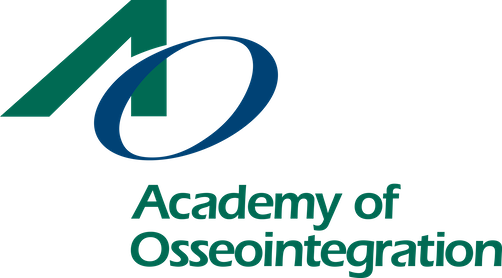-
 Derrick Pylant, DDS In this presentation we will discuss the indications for alveolar ridge preservation and immediate implant placement. Bio-material selection, surgical technique, and timing of implant placement will be highlighted with a clinical emphasis on practical and predictable techniques. Recorded - August 14, 2021
Derrick Pylant, DDS In this presentation we will discuss the indications for alveolar ridge preservation and immediate implant placement. Bio-material selection, surgical technique, and timing of implant placement will be highlighted with a clinical emphasis on practical and predictable techniques. Recorded - August 14, 2021 -
 Setareh Lavasani, DDS, MS This presentation is an interactive and comprehensive update in 2D and 3D CBCT radiographic interpretation. It focuses on the importance of developing an analytical strategy to systematically review different types of dental images. The importance of “pattern recognition” to differentiate between different jaw pathologies; inflammatory, benign, malignant and fibrou-osseous lesions with clinical cases will be discussed. An overview of possible differential diagnosis for paranasal sinuses opacifications and head and neck soft tissue calcifications are reviewed. Recorded - August 19, 2021
Setareh Lavasani, DDS, MS This presentation is an interactive and comprehensive update in 2D and 3D CBCT radiographic interpretation. It focuses on the importance of developing an analytical strategy to systematically review different types of dental images. The importance of “pattern recognition” to differentiate between different jaw pathologies; inflammatory, benign, malignant and fibrou-osseous lesions with clinical cases will be discussed. An overview of possible differential diagnosis for paranasal sinuses opacifications and head and neck soft tissue calcifications are reviewed. Recorded - August 19, 2021 -
 Dan Holtzclaw, DDS, MS Although they have been in use for over 50 years, pterygoid dental implants are one of the least understood styles of dental implant treatment. This may be due to the fact that pterygoid implants are widely considered to be one of the most difficult fixtures to place in all of implant dentistry. In this webinar, Dr. Dan Holtzclaw details his experience utilizing pterygoid implant in hundreds of full arch immediate load cases. Recorded - September 1, 2021
Dan Holtzclaw, DDS, MS Although they have been in use for over 50 years, pterygoid dental implants are one of the least understood styles of dental implant treatment. This may be due to the fact that pterygoid implants are widely considered to be one of the most difficult fixtures to place in all of implant dentistry. In this webinar, Dr. Dan Holtzclaw details his experience utilizing pterygoid implant in hundreds of full arch immediate load cases. Recorded - September 1, 2021 -
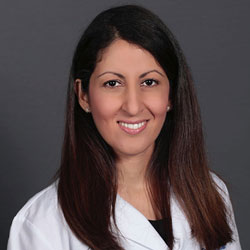 Ghadeer Thalji, DDS, PhD Success of dental implants requires the clinicians to understand the many factors that must come together to achieve long term outcomes. The lecture will explore the current scientific evidence on decisions related to the number of dental implants in various clinical scenarios of the partially and fully edentulous patients. Recorded - September 21, 2021
Ghadeer Thalji, DDS, PhD Success of dental implants requires the clinicians to understand the many factors that must come together to achieve long term outcomes. The lecture will explore the current scientific evidence on decisions related to the number of dental implants in various clinical scenarios of the partially and fully edentulous patients. Recorded - September 21, 2021 -
 Shih-Cheng Wen, DDS, MS Dental implant surgery has become a modern science and adjusting the occlusion of the implant restoration is one of the important factors to avoid the complications of dental implants. This presentation will share some literature on the subject of dental implant occlusion. Recorded - October 14, 2021
Shih-Cheng Wen, DDS, MS Dental implant surgery has become a modern science and adjusting the occlusion of the implant restoration is one of the important factors to avoid the complications of dental implants. This presentation will share some literature on the subject of dental implant occlusion. Recorded - October 14, 2021 -
 Andrea Ravidà, DDS During the last decade, short implants (≤6mm) have been shown to be a reliable and effective solution for patients with posterior bone atrophy. This presentation will explore in detail the scientific literature on short implants, providing evidence-based guidelines for clinicians concerning their use. Furthermore, the benefits and disadvantages of short implants in comparison to bone regenerative therapies in conjunction with standard length implant placement will be discussed. Recorded - October 20, 2021
Andrea Ravidà, DDS During the last decade, short implants (≤6mm) have been shown to be a reliable and effective solution for patients with posterior bone atrophy. This presentation will explore in detail the scientific literature on short implants, providing evidence-based guidelines for clinicians concerning their use. Furthermore, the benefits and disadvantages of short implants in comparison to bone regenerative therapies in conjunction with standard length implant placement will be discussed. Recorded - October 20, 2021 -
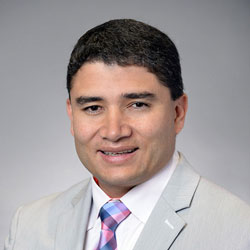 Emilio Arguello, DDS, MS This lecture will focus on the different models for successful management and integration of work-flows between a private practice versus a multi practice models. As well as the understanding of the common goals to maximize earning potential that can be achieved in both models from the practitioner’s point of view. Recorded - November 3, 2021
Emilio Arguello, DDS, MS This lecture will focus on the different models for successful management and integration of work-flows between a private practice versus a multi practice models. As well as the understanding of the common goals to maximize earning potential that can be achieved in both models from the practitioner’s point of view. Recorded - November 3, 2021 -
 Edward Shih-Chang Tseng, DDS, MS This lecture will introduce the biologic classification of soft tissue graft briefly and then highlight the clinical applications of connective tissue graft to enhance esthetics, increase keratinized tissue and prevent /correct the mucosal recession around the dental implant. The principles, procedures and technique notes of applying the connective tissue graft in implant dentistry will be addressed via not only clinical slides but also surgical clips and animations. Recorded - November 18, 2021
Edward Shih-Chang Tseng, DDS, MS This lecture will introduce the biologic classification of soft tissue graft briefly and then highlight the clinical applications of connective tissue graft to enhance esthetics, increase keratinized tissue and prevent /correct the mucosal recession around the dental implant. The principles, procedures and technique notes of applying the connective tissue graft in implant dentistry will be addressed via not only clinical slides but also surgical clips and animations. Recorded - November 18, 2021 -
 Despoina Bompolaki, DDS, MS Dental implants have become a widely accepted, sought-after treatment option for replacing missing teeth. Favorable treatment outcomes depend on proper planning and execution, from both a restorative and a surgical perspective. This lecture will go well beyond the basics of restoring dental implants: achieving predictable esthetic outcomes when restoring anterior implants; capturing accurate impressions in multiple implant cases; identifying proper componentry for existing implants; recognizing and addressing common prosthetic complications; and most of all, supporting clinical decisions with scientific evidence. Recorded - November 20, 2021
Despoina Bompolaki, DDS, MS Dental implants have become a widely accepted, sought-after treatment option for replacing missing teeth. Favorable treatment outcomes depend on proper planning and execution, from both a restorative and a surgical perspective. This lecture will go well beyond the basics of restoring dental implants: achieving predictable esthetic outcomes when restoring anterior implants; capturing accurate impressions in multiple implant cases; identifying proper componentry for existing implants; recognizing and addressing common prosthetic complications; and most of all, supporting clinical decisions with scientific evidence. Recorded - November 20, 2021 -
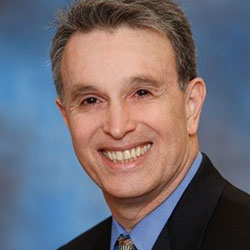 Robert Lemke, DDS, MD In implant dentistry, details count…they can add up to success, or to failure. Experienced surgeons rely on a system to ensure that all details are addressed in a methodical manner, so that none are overlooked. This course will help you to create a system that includes site analysis, preoperative medications, nuances in surgical procedures, and more for predictable success in implant surgery. Recorded - December 11, 2021
Robert Lemke, DDS, MD In implant dentistry, details count…they can add up to success, or to failure. Experienced surgeons rely on a system to ensure that all details are addressed in a methodical manner, so that none are overlooked. This course will help you to create a system that includes site analysis, preoperative medications, nuances in surgical procedures, and more for predictable success in implant surgery. Recorded - December 11, 2021 -
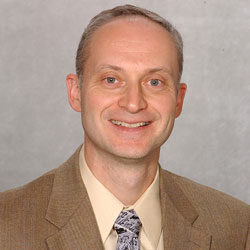 Len Tolstunov, DDS, DMD This presentation will discuss implant success and failure from the holistic approach and biologic balance that always exists between local and systemic factors. Loss of this balance and deterioration of key local factors and systemic condition will inevitably lead to a peri-implant bone loss and peri-implantitis. Surgical and some prosthetic considerations in implant failures will be discussed and clinical indices of implant success will be reviewed. Case presentations will help to review apical and marginal peri-implantitis. Inflammatory nature of peri-implantitis will be compared with non-inflammatory condition that can be classified as “peri-implantosis”. Treatment of peri-implantitis will be presented. Implant success will be defined as a dynamic process related to host’s health, as well as local factors, including bone and soft tissue quality around implant, implant design, and maintenance protocols. Finally, biologic principles of implant success at the time of implant placement and with age will be suggested. Recorded - January 19, 2022
Len Tolstunov, DDS, DMD This presentation will discuss implant success and failure from the holistic approach and biologic balance that always exists between local and systemic factors. Loss of this balance and deterioration of key local factors and systemic condition will inevitably lead to a peri-implant bone loss and peri-implantitis. Surgical and some prosthetic considerations in implant failures will be discussed and clinical indices of implant success will be reviewed. Case presentations will help to review apical and marginal peri-implantitis. Inflammatory nature of peri-implantitis will be compared with non-inflammatory condition that can be classified as “peri-implantosis”. Treatment of peri-implantitis will be presented. Implant success will be defined as a dynamic process related to host’s health, as well as local factors, including bone and soft tissue quality around implant, implant design, and maintenance protocols. Finally, biologic principles of implant success at the time of implant placement and with age will be suggested. Recorded - January 19, 2022 -
 Joseph Fiorellini, DMD, DMSc The clinician has multiple decisions when treatment planning for a compromised dentition. The evaluation of teeth for retention or extraction can involve factors including bone volume, extent of periodontal bone loss and restorability. The balance of these factors will enhance the predictably of the implants in the compromised dentition. Recorded - January 22, 2022
Joseph Fiorellini, DMD, DMSc The clinician has multiple decisions when treatment planning for a compromised dentition. The evaluation of teeth for retention or extraction can involve factors including bone volume, extent of periodontal bone loss and restorability. The balance of these factors will enhance the predictably of the implants in the compromised dentition. Recorded - January 22, 2022 -
 Frauke Müller, DMD When tooth loss occurs later in life, ageing and multimorbidity impact dental treatment decisions. There is sufficient evidence to state that the mandibular implant overdenture is a well-established treatment modality, certainly in non-dependent edentulous individuals, but little is known on the very old and geriatric edentulous patients with comorbidities. They often present unfavourable anatomical conditions and effects of the multiple medications for their chronic conditions. The present webinar therefore describes the use of minimal-invasive and simple treatment concepts for elderly, edentulous patients and discusses the risks of implant placement that are related to their medical conditions. It further highlights possible complications which may arise with the onset of dependency and/or frailty and advises further simplification of the implant-restorations when needed. Recall and maintenance in this group of patients is crucial to assure the patients’ benefit from the intervention until late in life. Recorded - February 2, 2022
Frauke Müller, DMD When tooth loss occurs later in life, ageing and multimorbidity impact dental treatment decisions. There is sufficient evidence to state that the mandibular implant overdenture is a well-established treatment modality, certainly in non-dependent edentulous individuals, but little is known on the very old and geriatric edentulous patients with comorbidities. They often present unfavourable anatomical conditions and effects of the multiple medications for their chronic conditions. The present webinar therefore describes the use of minimal-invasive and simple treatment concepts for elderly, edentulous patients and discusses the risks of implant placement that are related to their medical conditions. It further highlights possible complications which may arise with the onset of dependency and/or frailty and advises further simplification of the implant-restorations when needed. Recall and maintenance in this group of patients is crucial to assure the patients’ benefit from the intervention until late in life. Recorded - February 2, 2022 -
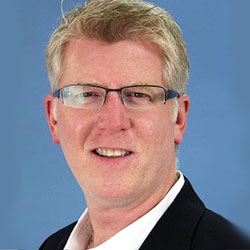 Lee Culp, CDT As dentistry evolves into the digital world, the successful incorporation of computerization and new technology will continue to provide more efficient methods of communication and fabrication while at the same time retaining the individual creativity and artistry of the skilled dentist and dental technician, while the utilization of new technology will continue to enhance the close cooperation and working relationship of the dentist/technician team. This presentation will offer participants a unique insight into digital design by creating a Virtual Patient by combining 3D Face Scanning, IOS and CT scans. Then using a combination of Diagnostic, Restorative, Orthodontic, Denture and Implant planning software for pre surgical planning to design, printed diagnostic wax-up and milled provisional PMMA restorations, and their digital replicas to guide us in the creation of cad-cam restorations, for both tooth and implant supported prosthetics. Recorded - February 5, 2022
Lee Culp, CDT As dentistry evolves into the digital world, the successful incorporation of computerization and new technology will continue to provide more efficient methods of communication and fabrication while at the same time retaining the individual creativity and artistry of the skilled dentist and dental technician, while the utilization of new technology will continue to enhance the close cooperation and working relationship of the dentist/technician team. This presentation will offer participants a unique insight into digital design by creating a Virtual Patient by combining 3D Face Scanning, IOS and CT scans. Then using a combination of Diagnostic, Restorative, Orthodontic, Denture and Implant planning software for pre surgical planning to design, printed diagnostic wax-up and milled provisional PMMA restorations, and their digital replicas to guide us in the creation of cad-cam restorations, for both tooth and implant supported prosthetics. Recorded - February 5, 2022 -
 Roya Zandparsa, DDS, MSc, DMD AI technology has been used in many aspects of human society, including medicine, and it is also being used more and more widely in dentistry. The applications extend from the research and development of new dental materials to diagnostic tools(e.g., to detect caries, periapical lesions, and periodontal disease), to treatment planning and oral health care delivery, to the post-treatment monitoring and follow-ups. In this presentation the basic concepts and principles of AI, the new advancements, new approaches, and applications of AI along with other digital technologies in dentistry will be discussed. Recorded March 15, 2022
Roya Zandparsa, DDS, MSc, DMD AI technology has been used in many aspects of human society, including medicine, and it is also being used more and more widely in dentistry. The applications extend from the research and development of new dental materials to diagnostic tools(e.g., to detect caries, periapical lesions, and periodontal disease), to treatment planning and oral health care delivery, to the post-treatment monitoring and follow-ups. In this presentation the basic concepts and principles of AI, the new advancements, new approaches, and applications of AI along with other digital technologies in dentistry will be discussed. Recorded March 15, 2022 -
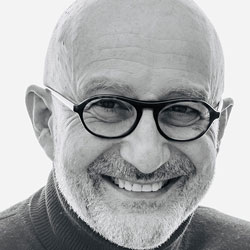 Philippe Khayat, MSD Peri-implantitis is a puzzling and frustrating complication. Sadly, it is becoming more and more frequent. Several senior dental professionals tell us that, for a long time (1985-2005), peri-implantitis was almost absent from their experience. They mention the shift from machined to modified implant surfaces as a possible explanation. In other terms, could moderately rough implant surfaces be a risk factor? The debate is very active and scientific studies do not lead to the same conclusions. We will explore this controversy both from a scientific and clinical perspective and evaluate the need for hybrid implants. Recorded - March 17, 2022
Philippe Khayat, MSD Peri-implantitis is a puzzling and frustrating complication. Sadly, it is becoming more and more frequent. Several senior dental professionals tell us that, for a long time (1985-2005), peri-implantitis was almost absent from their experience. They mention the shift from machined to modified implant surfaces as a possible explanation. In other terms, could moderately rough implant surfaces be a risk factor? The debate is very active and scientific studies do not lead to the same conclusions. We will explore this controversy both from a scientific and clinical perspective and evaluate the need for hybrid implants. Recorded - March 17, 2022 -
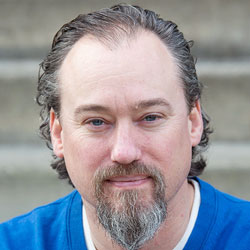 Cory Roletto, MBA This course will cover the most recent changes in online marketing and provide the components needed to create a comprehensive marketing strategy for both existing practices or start-ups. You will learn the key items to implement, how they work, and how to measure success. In this session we will discuss changes in Google’s algorithm, website optimization, social media, accessibility, and ways you can optimize your website to generate new patients. Recorded - March 23, 2022
Cory Roletto, MBA This course will cover the most recent changes in online marketing and provide the components needed to create a comprehensive marketing strategy for both existing practices or start-ups. You will learn the key items to implement, how they work, and how to measure success. In this session we will discuss changes in Google’s algorithm, website optimization, social media, accessibility, and ways you can optimize your website to generate new patients. Recorded - March 23, 2022 -
 Hsun-Liang Chan, DDS, MS Using the surgical microscope as a routine in the clinic for performing periodontal and implant procedures is beneficial! Increased magnification (10 to 25x) and confocal illumination make possible precise incision, soft tissue reflection and management, complete surface detoxification and detailed suturing. These delicate procedures can lead to improved wound stability and early revascularization, which could improve regenerative outcomes and reduce postoperative morbidity, as shown in the literature. This webinar will focus on the principles and rationale of using the surgical microscope for bone regenerative procedures. New insights into soft tissue evaluation for wound opening risk assessment, incision designs and wound closure techniques for predictable bone regeneration will be discussed. Recorded - April 13, 2022
Hsun-Liang Chan, DDS, MS Using the surgical microscope as a routine in the clinic for performing periodontal and implant procedures is beneficial! Increased magnification (10 to 25x) and confocal illumination make possible precise incision, soft tissue reflection and management, complete surface detoxification and detailed suturing. These delicate procedures can lead to improved wound stability and early revascularization, which could improve regenerative outcomes and reduce postoperative morbidity, as shown in the literature. This webinar will focus on the principles and rationale of using the surgical microscope for bone regenerative procedures. New insights into soft tissue evaluation for wound opening risk assessment, incision designs and wound closure techniques for predictable bone regeneration will be discussed. Recorded - April 13, 2022 -
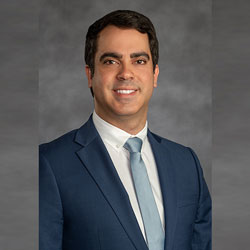 Rafael Siqueira, DDS, MS, PhD Immediate implant placement is a surgical approach that gained tremendously in popularity and patient acceptance throughout the years. One of the most desirable features of this technique is the potential in optimizing esthetic success by preserving the existing osseous and gingival architecture, with a reduced overall treatment time, invasiveness, and cost. However, unsuccessful treatments can occur if crucial biological principles are not respected. A thorough discussion concerning the bone remodeling process that occurs after tooth extraction and the 3D implant positioning in immediate implants is required. Together, these two factors will dictate the outcome of the peri implant tissue dimensions and architecture by their direct influence and interactions with other essential elements such as periodontal phenotype, loading protocol, abutment/prosthesis design, hard and soft-tissue augmentation. Recorded - April 20, 2022
Rafael Siqueira, DDS, MS, PhD Immediate implant placement is a surgical approach that gained tremendously in popularity and patient acceptance throughout the years. One of the most desirable features of this technique is the potential in optimizing esthetic success by preserving the existing osseous and gingival architecture, with a reduced overall treatment time, invasiveness, and cost. However, unsuccessful treatments can occur if crucial biological principles are not respected. A thorough discussion concerning the bone remodeling process that occurs after tooth extraction and the 3D implant positioning in immediate implants is required. Together, these two factors will dictate the outcome of the peri implant tissue dimensions and architecture by their direct influence and interactions with other essential elements such as periodontal phenotype, loading protocol, abutment/prosthesis design, hard and soft-tissue augmentation. Recorded - April 20, 2022 -
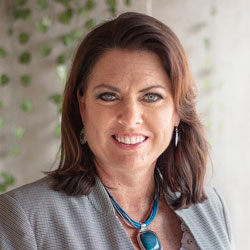 Kristie Kapp, RDH This webinar will discuss how to build a productive, profitable business without sacrificing patient and practice relationships. Dental practices which develop a culture shaped by a basic KPI's and team trust, naturally culminate in exceptional patient care, a bonded team, and a more joyous work experience. Recorded - May 3, 2022
Kristie Kapp, RDH This webinar will discuss how to build a productive, profitable business without sacrificing patient and practice relationships. Dental practices which develop a culture shaped by a basic KPI's and team trust, naturally culminate in exceptional patient care, a bonded team, and a more joyous work experience. Recorded - May 3, 2022

